Using advertising and marketing to fool and mislead the public for the purpose of making a profit is wrong. It’s tantamount to openly stealing from people, and maybe it’s worse. At least if you steal from someone, all they lose is their money but, if you sneakily market a bad product to them, you simultaneously take their money and potentially damage their health.
Recently, I was lucky enough to be a guest at my sister’s house, and I found some shower gel in her bathroom. Initially, it looked like she’d made a good choice but, on closer examination, I was horrified. The glossy marketing of the product was trying to cover up the less than ideal ingredients.
Marketing products to make them seem like something they are not is wrong. We should not accept this from any corporation.
Marketing – the first look
Have a look at the front of this shower gel bottle and look at all the phrases that are trying to pass on the feeling of purity, naturalness, safety and goodness.
- Original Source
- 82 Sunrises
- Vanilla & Raspberry
- 100% Natural Fragrance
- Vegan
If you saw this in a store, you could rightfully think that this product might be kind on your body and kind on the environment, without any nasty chemicals. You might just buy it and be happy that it’s one small step to help your body and the environment.
Marketing – a closer look
Let’s look a bit closer by turning the bottle over.
Here we see repeats of many of those phrases and buzzwords we saw on the front, plus these new ones;
- Natural Moisturisers
- Tested on us
- Recyclable Bottle
- Made in the UK (I was in Australia, so shipping this product all that way isn’t that good really)
Ok. Now we’re probably thinking that their can’t be much wrong with this product. Must be a good thing to buy, right?
Checking the ingredients
Now it’s time to get scared. The ingredients don’t seem very nice at all. These don’t seem to match with the marketing hype at all. Let’s take a look at some of the worst ingredients.
Sodium Laureth Sulfate – This is an artificial cleaning and foaming agent. The second ingredient (just after water) is an artificial chemical that has little good to be said about it. This article on mercola.com [Click Here] does a very good job of explaining the dangers of Sodium Lauryl Sulfate (SLS) and Sodium Laureth Sulfate (SLES). One of the statements on this page is “Did you know that, if you use conventional cosmetics on a daily basis, you can absorb almost five pounds of chemicals and toxins into your body each year?”. Another page on Sodium Laureth Sulfate [Click Here] says “This compound can be irritating to the eyes and skin, and may contain the carcinogen dioxane. The Cosmetic, Toiletry and Fragrance Association discourage SLES for prolonged use, unless in extremely low concentrations. According to a U.S. Environmental Protection Agency study, sodium laureth sulfate applied above a 5 percent concentration produced severe irritation, hair loss and death in laboratory animals.” These two websites are enough for me to want to avoid Sodium Laureth Sulfate as there’s too much risk. However, marketing on the Paula’s Choice website pronounce Sodium Lauryl Sulfate as “Poor” and Sodium Laureth Sulfate as “Good”. They say that Sodium Laureth Sulfate “is a milder cleansing agent due to a higher amount and different chemical structure of the fatty alcohols required to manufacture this cleansing agent. The safety of sodium laureth sulfate has been reviewed by numerous industry experts and deemed safe as used.” I find that hard to believe.
Sodium Chloride – the third ingredient is common salt. Why is that in a shower gel? All it does is thicken up the product, it’s not something you need for the shower gel to get you clean. Would you want to rub salt on your skin in the shower?
Cocamidopropyl Betaine – another foaming agent. Nothing too damning about this but it’s acknowledged that it can cause skin and eye irritation and rashes. That doesn’t sound good for a shower gel.
Sodium Benzoate – this is an anti-fungal preservative that even Coca-Cola phased out in 2008 because of its terrible health concerns, yet here it is in this shower gel.
Benzotriazole Dodecyl p-Cresol – this is one of those chemicals that is classified as safe when the exposure is limited, which means it’s not safe if exposed to too much of it. To me, that’s not safe. This report from the Australian government says – “Employers should ensure that the following personal protective equipment is used by workers to minimise occupational exposure to the notified chemical as introduced in the product TINOGARD TL (Benzotriazole Dodecyl p-Cresol) – Use protective gloves” and further “Transport and Packaging – Avoid release to the environment”. So why do we have such a dangerous chemical in this shower gel? Well, this report says “it protects colors, fragrances, natural compounds and other sensitive ingredients from photolytic and/or photooxidative degradation, thus providing long-lasting shelf life even with light sensitive formulations”. Surprise, surprise! It’s in there to help the product keep its colour and fragrance so it can have a longer shelf life and be easier to sell. It’s there for the manufacturer, but you are going to put it on your skin.
Phenoxyethanol – this is another chemical that is clearly very dangerous when in concentrated form but is considered safe in low concentrations (I don’t believe them). It’s actually the chemical that is being used to replace parabens, and it’s used as a preservative. You can see two interesting reports here and here.
CI 14700 – a synthetic red colouring derived from coal tar that was approved for food use but that’s been withdrawn (see this post). CI 14700 is one of the colourings that “are carcinogens which affect nerve transmission in the brain, causing genetic damage” (see this post).Why add something that might be a danger to our health to a shower gel? Oh that’s right – it might sell more easily if it has a nice colour.
Conclusions – marketing like this is wrong
The ingredients list is very damning. I didn’t have to look very far to find worrying evidence about many of the ingredients. No only that, the dangerous ingredients are generally not there to make it a better shower gel, they are there to improve the colour, smell, consistency and shelf life of the product. They are there to make it easier to sell the product to you (or, should I say, to trick you into buying the product) and not for your benefit at all.
The world doesn’t have to be like this. We can conduct business while caring for the wellbeing of every person and all things on the planet. If fact, this is how we should demand that business is done. Nothing else makes sense.
At the other end of the spectrum, I realised that my daughter had bought an organic shampoo from a company called Urtekram.
Look at the ingredients in this shampoo. Nothing at all to be worried about as far as I can see and some of the ingredients are from organic farming. This is what we all deserve. We don’t deserve the addition of dangerous chemicals so the companies can sell more easily and we don’t deserve misleading and untruthful marketing.
We don’t deserve to be treated badly and we can demand to be treated better (while at the same time committing to treat all people, animals and things on the planet well).
One of the best ways to give the big companies this message is to check the ingredients and don’t buy products with dangerous chemicals. Don’t be fooled by misleading marketing. It might be a little harder to find better products, but they are out there. It’s worth if for you, it’s worth it for me and it’s worth it for everything on the planet.
Please use the comments below to share similar experiences, additional thoughts and viewpoints. Thanks very much.
Related Links – Marketing like this is wrong
- Finding Lovely, Natural Soaps
- It’s worth studying the label
- Detoxification Through Natural Personal Care Products – Step 3
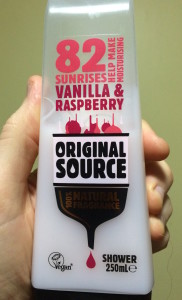
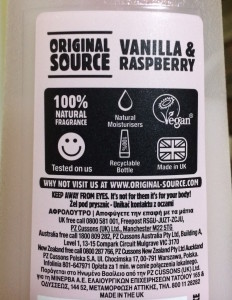
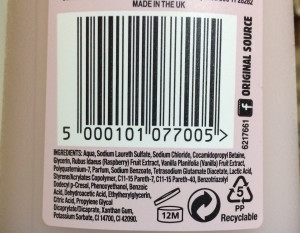
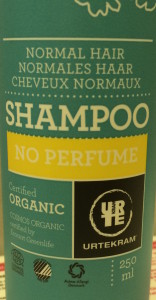
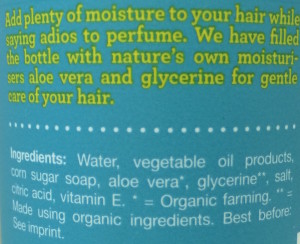
Well said.
I am lucky enough to have business owners in my area who have similar concerns and stock only products that satisfy their own ethical standards. Needless to say, they are not major chain stores.
As the effort of reading every label is a significant one, I choose to buy from the products available at the ethical and aware businesses, and this supports my local community as well.
Thanks Sue. I agree that a good option is to find companies and stores that have good standards and support them. I also like your intention of supporting the local community. Life in general is better when we consider ourselves as part of a local community and that’s something that would serve us well to recapture.